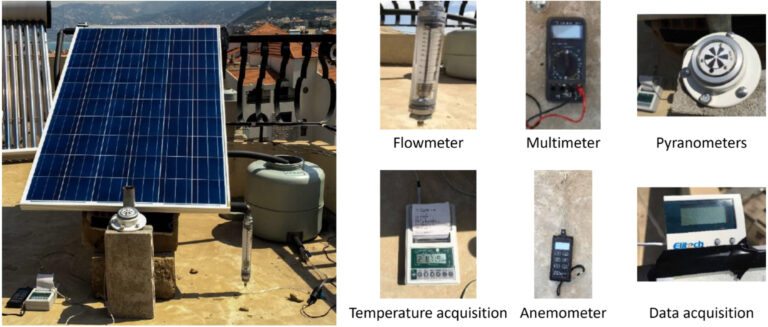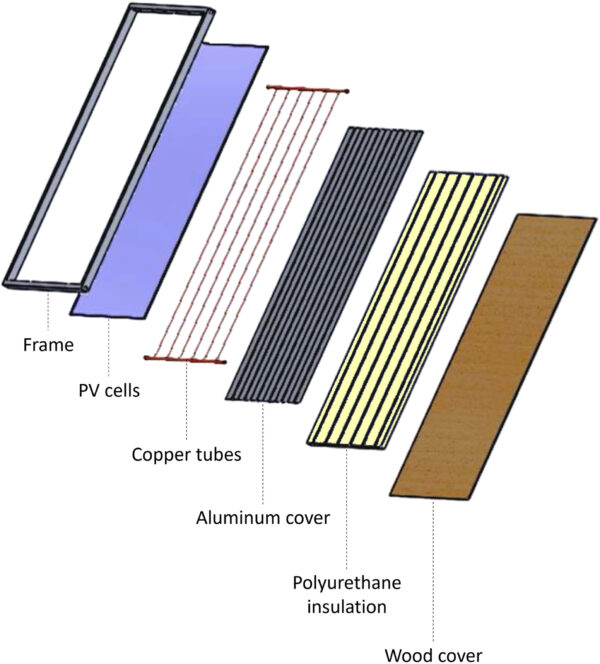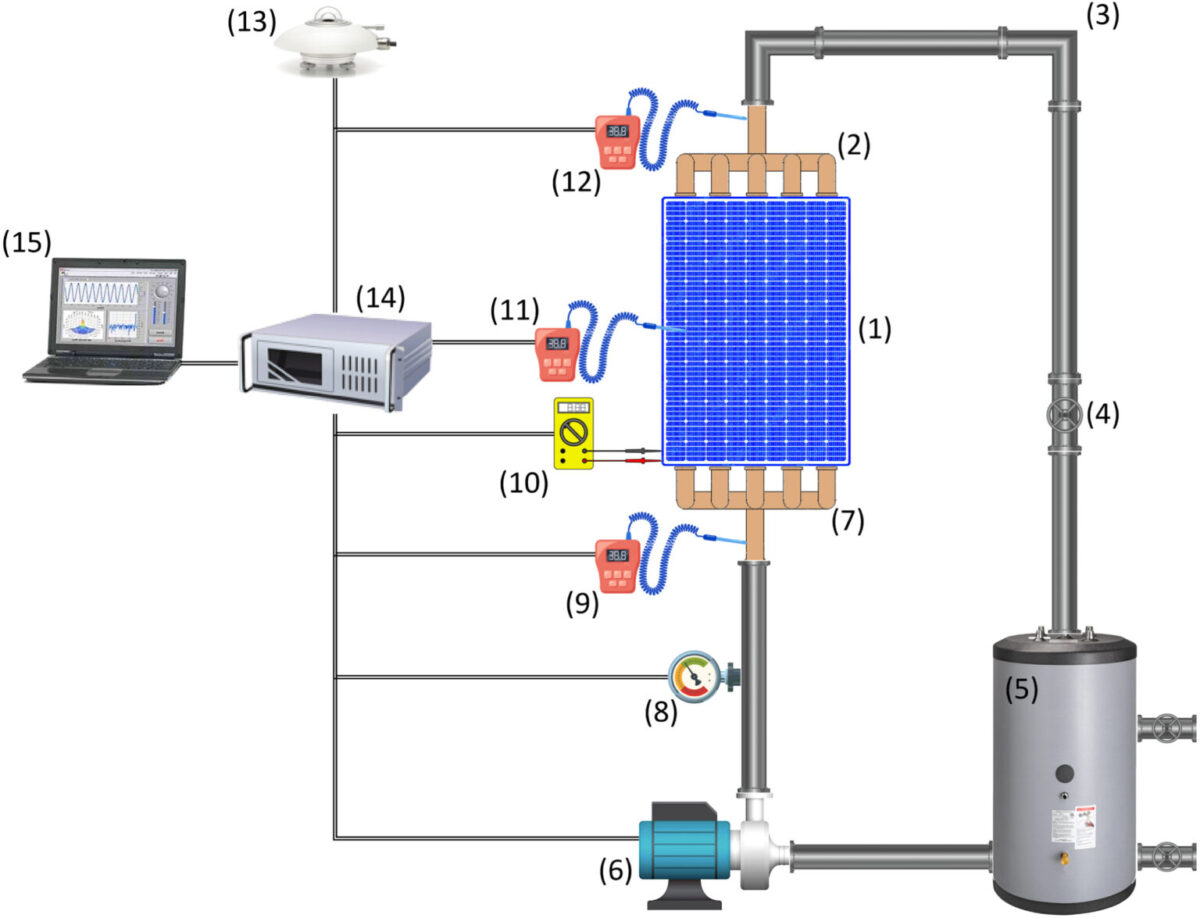From pv magazine global
Researchers at the Multiphysics Interaction Lab (MiLab) in the Los Angeles have developed a new photovoltaic-thermal (PVT) system design that uses waste heat from PV panels to generate residential hot water systems.
The system is based on parallel water pipes that are attached to the backside of the solar panels and reduce their operating temperatures. “Our study introduces a simple and practical cooling approach that enhances the electrical efficiency of PV panels while simultaneously offering a sustainable solution to residential hot water needs,” the scientists said.
The experimental system relies on a south-oriented 250 W polycrystalline PV panel with a temperature coefficient of -0.45%/C and a tilt angle of 30 degrees. The copper cooling pipes are connected via upstream and downstream headers and are covered by an aluminum cover to secure them to the backside of the PV panel.
The experimental setup includes a hot water storage tank and an 11 W centrifugal pump that maintains a constant flow rate of 3 L/min.

Image: Multiphysics Interaction Lab (MiLab), International Journal of Thermofluids, Creative Commons License CC BY 4.0
“The water flow rate is monitored using a flowmeter,” the scientists explained. “To gather accurate data, a set of thermocouples is strategically placed to simultaneously measure various temperatures, including the inlet and outlet water temperatures of the PV/T system, the PV panel’s surface temperature, and the ambient air temperature.”
The system also uses a multimeter to measure the PV module’s output power and a pyranometer to assess solar radiation.
The academics compared the performance of the cooled PV panel to a reference panel without cooling during May at the Notre Dame University-Louaize campus, located in Zouk Mosbeh, Lebanon.

Illustration showing the different parts of the PVT system
Image: Multiphysics Interaction Lab (MiLab), International Journal of Thermofluids, Creative Commons License CC BY 4.0
Their analysis showed that the PVT panel can generate 4% more power than the PV module, thanks to the cooling effect of the copper pipes. They also warned, however, that a saturation effect related to the hot water stored in the tank not being effectively utilized, may limit the ability to optimally cool the PV modules at a certain stage.
“This reduction is likely due to the absence of residential water demand in the waste heat recovery system,” the researchers further explained. “This absence causes the cooling water temperature in the hot water reservoir to gradually increase, reducing thus the rate of heat removal from the PVT system.”
The tests also showed that the PVT panel achieved an average electric efficiency of 11.5% while the PV panel without cooling reached an average efficiency of 10%. The scientists also revealed that the PVT system’s total efficiency reached around 75% and that of the reference PV system was only about 10%.
“The average thermal efficiency, representing the ratio of recovered waste heat to the solar energy absorbed by the PV panel, was approximately 60% in the cooled PV/T system,” they also stated. “The cooled PV/T system not only generated a higher fraction of electric power but also exhibited an approximately 40% higher rate of heat loss from the back side of the PV module, indicating the efficient waste heat recovery.”
The system was presented in the paper “An experimental analysis of a hybrid photovoltaic thermal system through parallel water pipe integration,” published in the International Journal of Thermofluids.
This content is protected by copyright and may not be reused. If you want to cooperate with us and would like to reuse some of our content, please contact: editors@pv-magazine.com.









By submitting this form you agree to pv magazine using your data for the purposes of publishing your comment.
Your personal data will only be disclosed or otherwise transmitted to third parties for the purposes of spam filtering or if this is necessary for technical maintenance of the website. Any other transfer to third parties will not take place unless this is justified on the basis of applicable data protection regulations or if pv magazine is legally obliged to do so.
You may revoke this consent at any time with effect for the future, in which case your personal data will be deleted immediately. Otherwise, your data will be deleted if pv magazine has processed your request or the purpose of data storage is fulfilled.
Further information on data privacy can be found in our Data Protection Policy.